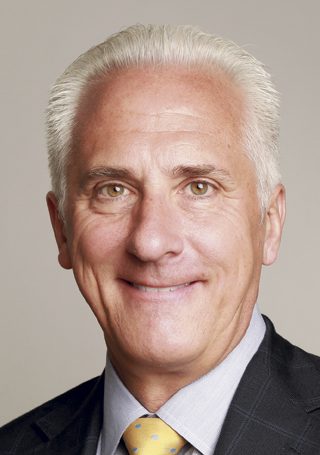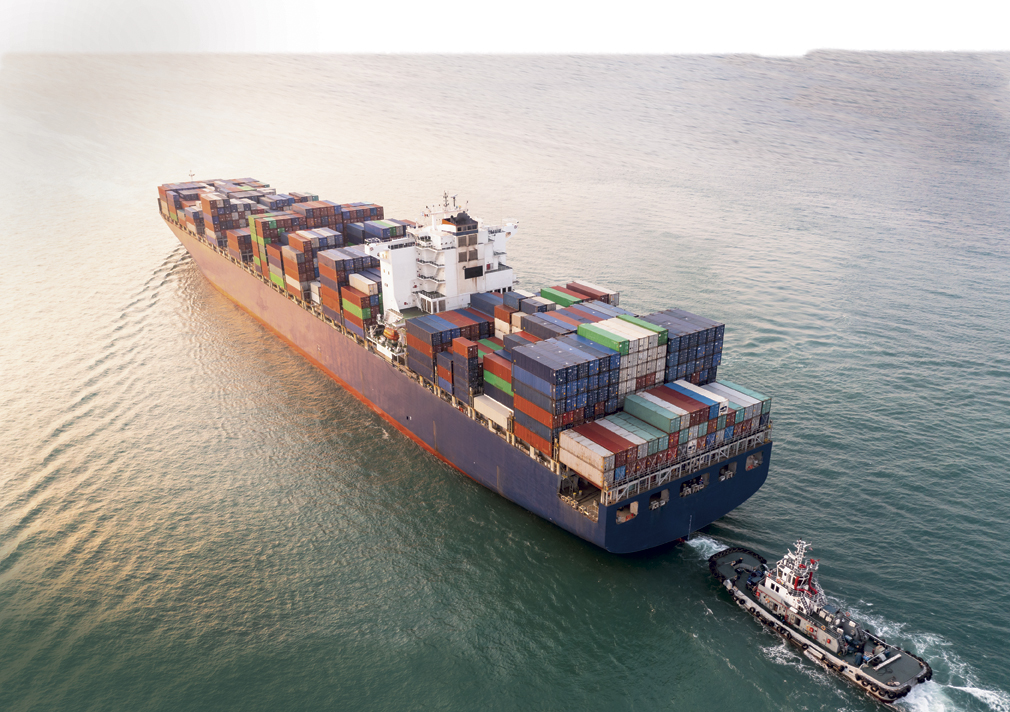CARGO INSURANCE
Providers prepare to meet the need as supply chains are re-established
By Joseph S. Harrington, CPCU
Looking back on 2020, ocean marine producer Brendan Neligan with Risk Placement Services (RPS) says that “the pandemic nearly brought supply chains to a halt.” Now that those supply chains are re-opening in the wake of COVID-19, cargo insurers—both ocean and inland—must adjust to new conditions.
An indicator of the disruption wrought by the pandemic is the 2020operating results for the U.S. inland marine insurance market, which includes coverage for inland cargo shipments. For the first time in decades, this consistently profitable line underperformed the U.S. property/casualty business as a whole, according to results reported by the A.M. Best Company.
Most of the deterioration in inland marine loss experience came from event cancellation coverage and other classes directly affected by the pandemic. But Best’s also notes that shipments of goods declined sharply in March and April 2020 before recovering slightly and leveling off later in the year, thus contributing to an overall decline in inland marine premium from 2019. The line’s aggregate loss ratio exceeded the overall industry’s by five percentage points while its combined ratio approached 100, both nearly unprecedented developments.
As for ocean cargo, the International Union of Marine Insurance (IUMI) reports that “the gap between insured values and cargo premiums has been widening in recent years.” Observers were looking for that trend to abate, but uncertainty wrought by the pandemic has made it more difficult to predict what will happen, the IUMI says.

—Andrew D’Alessio
Head of Ocean Cargo, Americas
AXA XL
Material impact
“The pandemic impacted the logistics chain in a material way,” says Andrew D’Alessio, head of ocean cargo for the Americas at AXA XL and chair of the cargo committee of the American Institute of Marine Underwriters (AIMU), a trade association for U.S. ocean marine insurers. “Staff illnesses plus designed reductions in staff and regulatory restrictions lowered the handling capacity. Since then, capacity limitations and backlogs are causing delays and product shortages.”
At the same time, D’Alessio says, ocean cargo insurers suffered several large losses where containers washed overboard, in addition to losses from vessel fires and natural disasters. The grounding of the freighter Ever Given in the Suez Canal, which prompted widespread rerouting and delays, capped a tumultuous year for ocean cargo shipping.
“COVID has been a disruptor to the supply chain,” says Rich Soja, head of marine for North America and global head of inland marine for Allianz Global Corporate & Specialty. “In some cases, we’ve seen clients shift from air freight to ocean freight due to a lack of flights. This has compounded a widely reported shortage of shipping containers, thus increasing shipping costs and creating additional challenges for our assureds.”
Like D’Alessio, Soja says ocean cargo insurance carriers continue to be impacted by large losses, driven by turbulent weather in the Pacific, vessel fires, container stack collapses, and natural catastrophes. “One of the greatest challenges is aggregation management, both at the port and on vessels,” he explains.
Insurance market
Disruptions to supply chains and cargo capacity are impacting the market for cargo insurance.
“For 10 to 15 years, we dealt with a soft market and plenty of capacity,” says Johnny McCord, CEO of Loadsure, an MGA that provides platform automation for managing cargo risk and placing coverage. “Pricing was incredibly competitive, resulting in very low deductibles and increasingly broader terms. The market was unsustainable.
“Now, the cargo market is in a state of correction,” McCord adds. “Lloyd’s of London has been a key driver of this pendulum shift, forcing many [insurance providers] to withdraw. While this correction was necessary, the restricted appetites and reduced insurance capacity creates tremendous stress for buyers—especially with the added challenges of COVID-19.”
“The pandemic has shed light on overly broad terms underwriters have accepted over the past decade without much pushback,” says John Ellis, head of ocean marine for Canopius USA. “Brokers were able to include coverages for their clients that, quite frankly, many underwriters underestimated.”
Today, Ellis says, “carriers are backing away from extremely broad cargo policies and being more selective in what risks they are willing to cover. This has been apparent in the extension of warehouse storage exposures and coverage for pandemic-related delays in shipments.”
For his part, D’Alessio finds that “ocean cargo insurance in the American market is undergoing market correction with respect to rates, terms, conditions, and capacity.
“After years of coverage expansion in a competitive environment, insuring conditions are being limited,” he says. “Carriers are managing the size of their lines by providing lower primary limits and increasing their use of subscription policies.”
Paul Boulos, national cargo product leader for The Hartford, says that his company detects a “strong trend” toward logistics providers offering shippers interest coverage for their clients. “The logistics firm buys an all-risk cargo policy and provides coverage as a value-added benefit rather than just protecting their liability,” he explains. “This is an opportunity for capable cargo carriers to effectively cover all sides of the insurance transaction for goods in transit.”

—Rich Soja
Head of Marine, North America, and Global Head of Inland Marine
Allianz Global Corporate & Specialty
Targeted hardening
For Soja, rate hardening in cargo lines is not new; he believes rate hikes may actually be decelerating for certain types of business. Nonetheless, he predicts that rates will continue to rise for difficult commodities or volatile risks, and that a trend towards writing coverage for larger risks on a quota-share basis will continue.
Ellis shares that outlook, saying that he detects a shift from a hardening market to one that is more “targeted.”
“On straight-forward cargo risk, price increases seem to be slowing,” Ellis says, “but on more complex and hazardous risks, underwriters can still wield discretion. Brokers seem to be struggling more on programs with a large retail element, where underwriters are still able to underwrite effectively.”
Yet for all the risks to shipments overseas, perhaps the most distressed foreign market for U.S. shippers is in neighboring Mexico, which is plagued by violent crime and cargo theft.
According to Neligan, insurers routinely exclude coverage for cargo losses in Mexico due to theft, pilferage, and non-delivery. Recently, they’ve gone beyond that to introduce exclusions for losses on certain roads or within certain areas, and to include coverage warranties mandating the implementation of certain security procedures.
“That’s not to say those loss perils cannot be bought back or added in, but at what cost?” Neligan says. When it comes to shipments within Mexico, Neligan says insurers are demanding that shippers and motor carriers “have more skin in the game.”
Domestic cargo
As the Mexican example suggests, some of the same factors disrupting ocean transit are having an impact on domestic cargo shipments. Among other things, pandemic conditions are believed to have contributed to an increase in cargo theft, which was up overall in 2020 from the previous year, according to the cargo security firm Sensitech.
“COVID-19 created a perfect storm of cargo threat and vulnerability,” says McCord. “Stressed and distracted workers were more vulnerable to scams, like fictitious pickups. Non-violent offenders, like cargo thieves, were released from prison to contain the spread of the virus. Finally, those who lost jobs or had their hours slashed may have been more likely to engage in criminal activity.”
Managing domestic cargo risk has been complicated by distressed conditions in the market for commercial auto liability.
“Pricing increases, reduced coverage, and broad exclusions—trends that have created a lot of pain within the cargo and logistics industry—have been compounded by rising commercial auto insurance costs,” McCord says. “Auto insurance costs per mile have spiked 18.3% in the last five years alone, and these rising costs are hitting smaller fleets even harder, forcing many of them out of business.”
One result is that more shippers and motor carriers are seeking alternatives to costly package policies that cover fleet and cargo risks, opting instead to shop for lower-cost auto liability coverage, according to Chelsea Bergen, area assistant vice president and inland marine cargo specialist in RPS’s Chicago brokerage office. That puts more common carriers in the market for stand-alone cargo coverage, which Bergen sees as having “true organic growth potential” for cargo insurers.
Bergen finds an upside to the COVID-19 pandemic in the surge in growth she sees in courier services for small local shipments, many of whom serve as contractors to major shippers like Amazon. She expects many will survive the pandemic and remain a permanent feature of domestic commerce.

—John Ellis
Head of Ocean Marine
Canopius USA
Drivers and tech
For motor carriers to survive, at least in the short term, they will have to address a persistent shortage of skilled, experienced drivers, at least until automated vehicles become common. Advances in technology are already critical to managing fleet and cargo risk for domestic shipments.
“Electronic logging devices used to measure hours of service and record vehicle operations are now standard fare,” says Soja. “Beyond that, new technology advances are being developed to allow for dynamic pricing of a risk as operating conditions change.”
D’Alessio finds the impact vehicle telematics and other technological innovations to be “extremely positive. Many applications address the human element of a risk as well as the operating environment, machinery, and the nature of the cargo itself,” he says.
In all, “technical advancements have set the stage for vastly improved and more accurate cargo risk rating,” says McCord.
“Modern, connected transportation management systems capture details that traditional business surveys on insurance applications simply can’t match,” he adds. “Soon, rating on real-time business activity will become the new normal, and will allow insurance companies to rate on timely, accurate data.”
Ship design
Commercial shipping is undergoing its own technological revolution, but it is harder to determine how that will impact cargo safety.
“The ability to track the disposition of cargo at sea has been a benefit to underwriters,” says Boulos. “This includes use of GPS trackers and temperature sensors, as well as tamper proofing, which have all resulted in improved risk.
“Conversely, as vessels continue to increase in size, run-of-the-mill cargo losses are magnified,” Boulos adds. “This requires more attention for underwriters to determine how to deal with single events that are impacting greater numbers of insureds.”
Ellis finds that “the unprecedented amount of new technology and the sheer increase in vessel size is nothing short of engineering genius,” but adds that “it is too early to tell whether these advances will result in a reduction of cargo insurance risk.
“Bigger ships and more containers mean bigger losses when an event occurs,” he adds. “To my surprise, the engineering of these larger ships has not made containers safer during transit. What was once the safest cargo insurance risk, container movements on vessels, has become more problematic than ever before from an insurance standpoint.”
In addition, the Ever Given incident was a vivid demonstration of how marine transit infrastructure must be upgraded to accommodate new vessels, says Neligan. The latest designs are more efficient and “environmentally friendly,” he says, but they require expansion of port facilities and stevedore crews.
“We have a lot less room for error today in terms of infrastructure,”he says.
For more information:
Allianz Global Corporate & Specialty
www.agcs.allianz.com
AXA XL
www.axaxl.com
Canopius USA
www.canopius.com
Loadsure
www.loadsure.net
Risk Placement Services
www.rpsins.com
The Hartford
www.thehartford.com
The author
Joseph S. Harrington, CPCU, is an independent business writer specializing in property and casualty insurance coverages and operations. For 21 years, Joe was the communications director for the American Association of Insurance Services (AAIS), a P-C advisory organization. Prior to that, Joe worked in journalism and as a reporter and editor in financial services.






